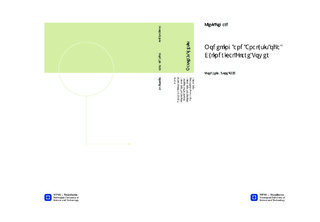| dc.description.abstract | The study of a cylindrical flare tower concept proves that this novel flaretower design has great potential and could be a competetor to traditionaltruss-work flare towers. A design capable of withstanding wind and sealoads are developed.A conical model was developed for finite element analysis, with decreasingdiameter from process deck to the top of the flare tower. The towerwas split into three sections, as the wind moment would give larger stressesat the bottom of the tower, than of those at the top. The total height ofthe tower is 70 meters with a bottom diameter of 5 meters. The diameterat the free end is 3 meters. The tower is a steel structure with differentshell thickness for each section. To avoid buckling collapse, longitudinalstiffeners are present at the bottom section, while ringstiffeners are includedat the bottom and mid section. Cut-outs are also present to minimize thewind loads by ventilation. The loads have been calculated using the Frøyawind model and Frøya wind spectrum, providing wind loads for quasi-staticand dynamic analysis, respectively. Accelerations from platform movementswere provided from 5D Group AS and included in the analyzes. All finiteelement analyzes, performed in ANSYS, revealed stresses well within the acceptablerange. The dynamic response amplitudes were low. However, somestress concentrations were found around the cut-outs from the quasi-staticanalysis. The buckling capacity of the shell structure was determined by anon-linear buckling analysis, with maximum fabrication tolerances includedas the material imperfections. Vortex-induced vibrations were investigated,giving small cross-flow and in-line amplitudes. Using the hot spot stress fromANSYS, a fatigue analysis was performed to determine the lifetime of theflare tower. The fatigue analysis shows no initiation of fatigue cracks underthe given environmental loads. Since the stress concentrations did not proveto initiate fatigue crack during the given lifetime, this proves that the flaretower is slightly oversized. | nb_NO |

